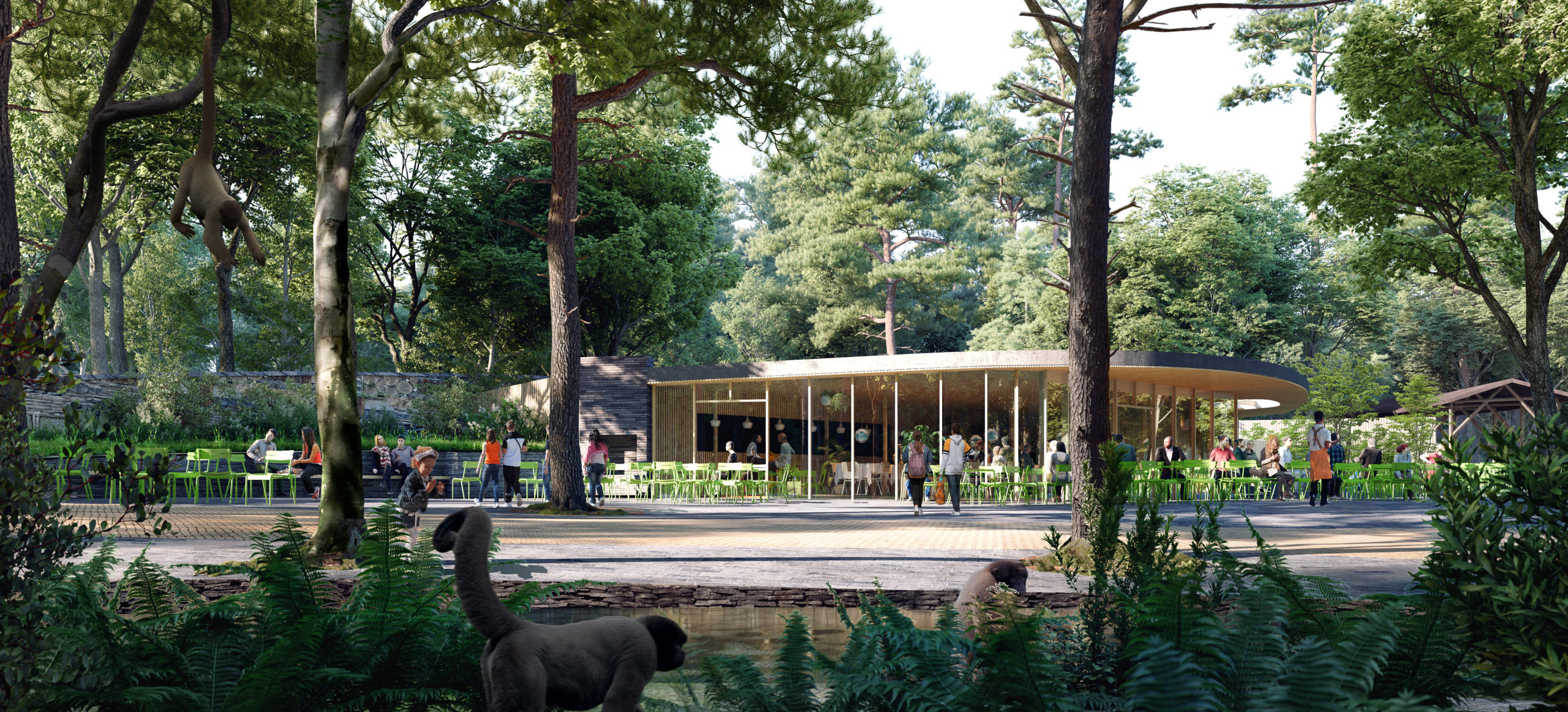Ecological Wellbeing and Biodiversity
This design sets a new standard for zoos in the 21st century. Starting from Apenheul’s pioneering role in housing primates based on social welfare, towards an integral concept of ecological wellbeing between primates and humans. The masterplan design combines landscape, architecture, biodiversity and visitor experience.
The first phase, measuring about 1ha and containing facilities for several monkey species, as well as for Homo Sapiens, have been completed.
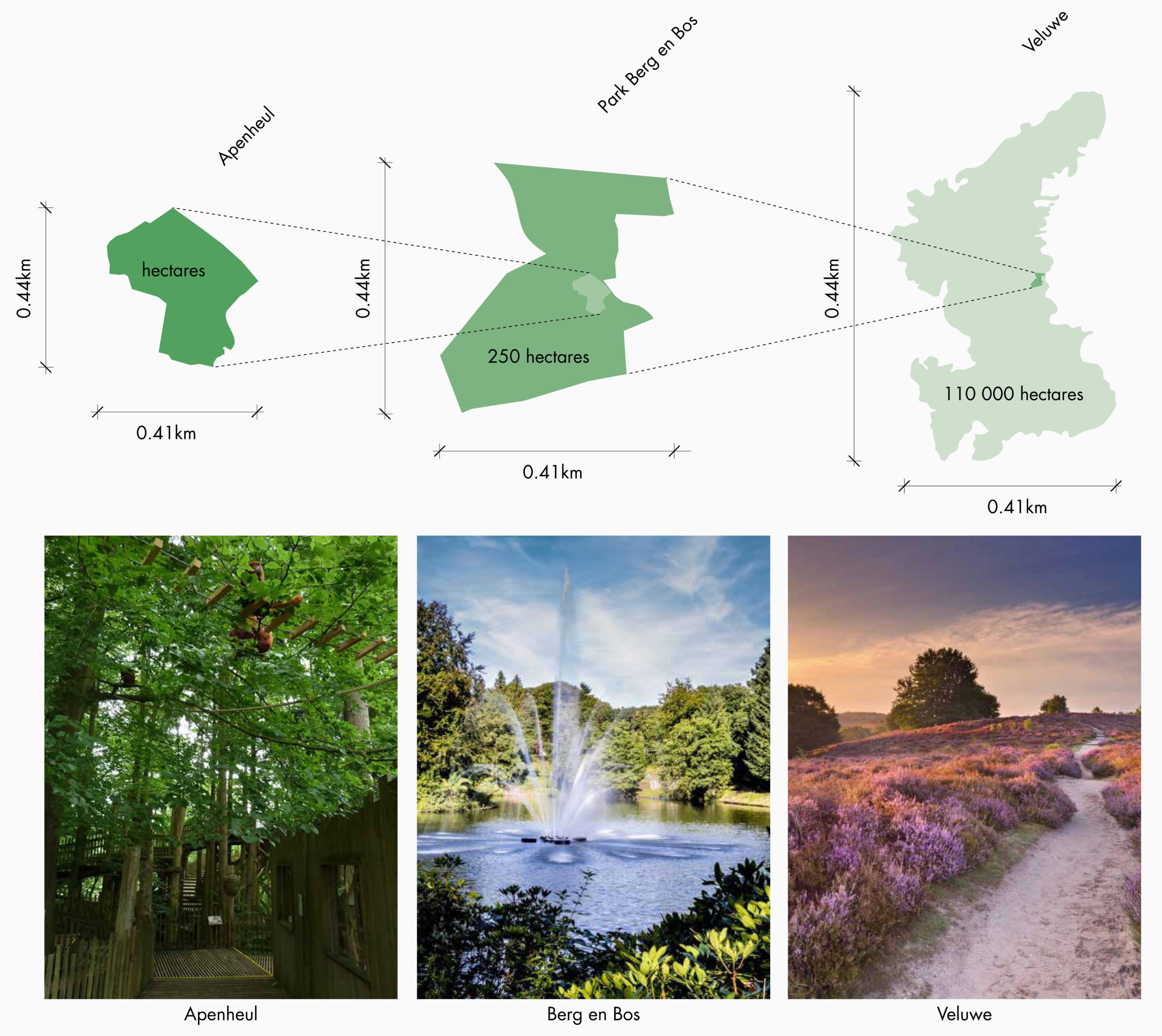
Park in Park
Maison h designed the first new area for Apenheul in over ten years, on the eve of its 50th anniversary.
Apenheul was founded in 1971 with the belief that man needs to be more mindful of their impact on nature and the animals with which we share this planet. The park was established through humble beginnings, with two species of primates, and has now grown to house many more species, as well as an aviary.
The park champions education as well as research and conservation projects around the world carried out through the APCT foundation.
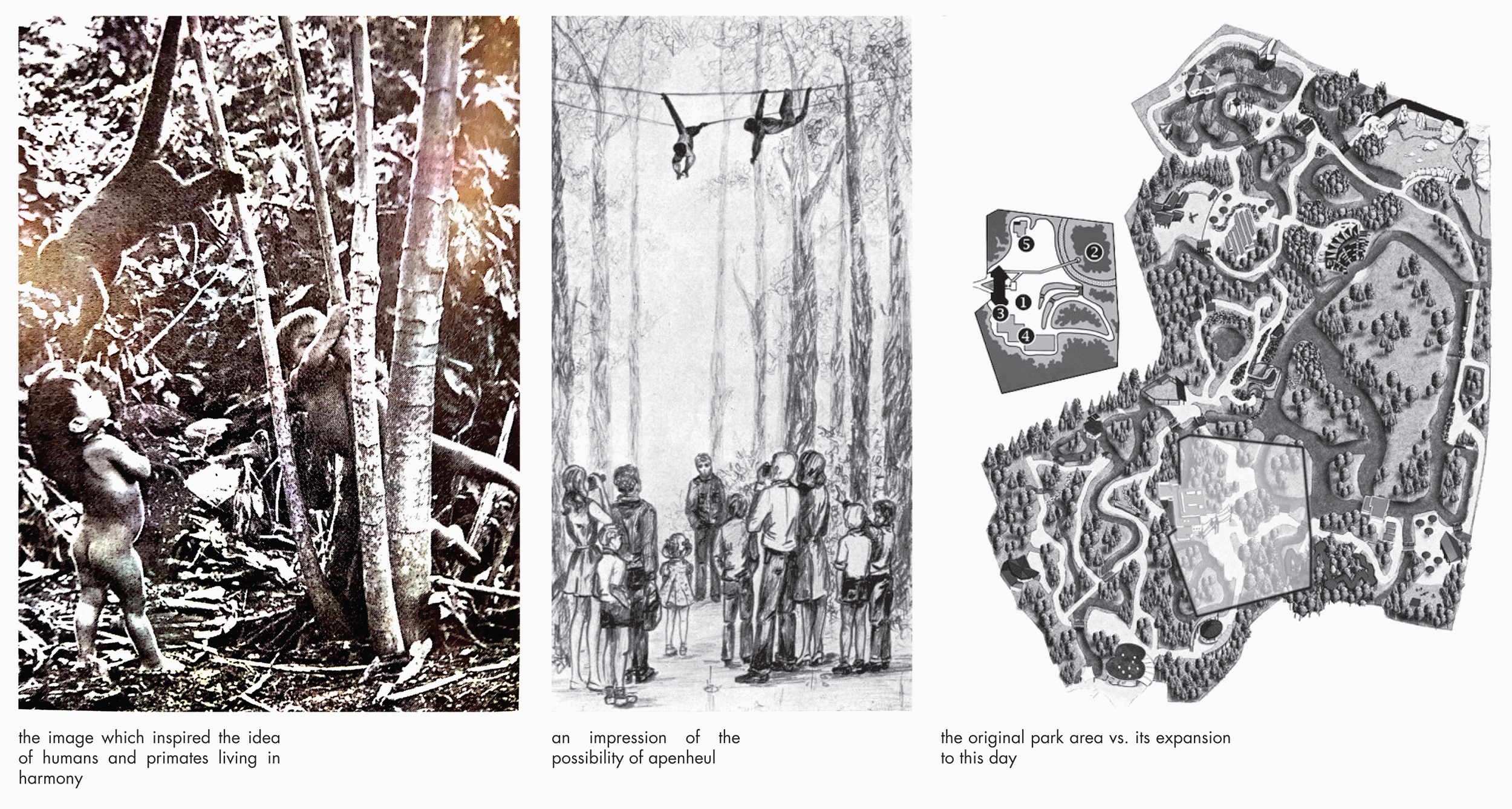
Location
Apenheul is situated within the Park Berg en Bos, which is enveloped by the De Hoge Veluwe National Park. The landscape is very unique in the context of the rest of the Netherlands, with large forested areas and diverse wildlife. Attracted by this unique and diverse landscape of Apenheul is a great diversity of wildlife who inhabit the area. There are roughly 24 different species of birds found in the park, of which at least two are endangered in the Netherlands.

Historical Site Maps
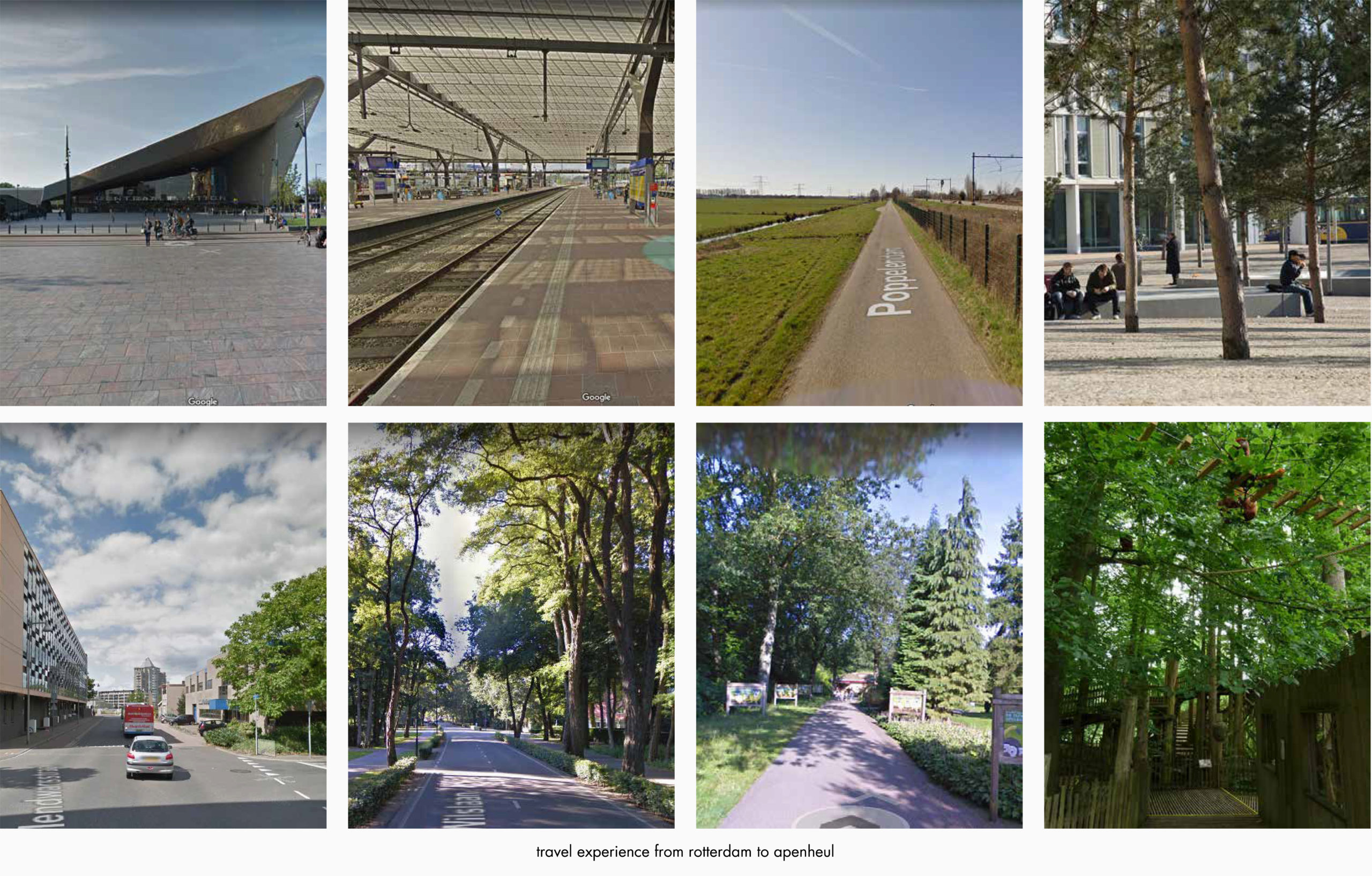
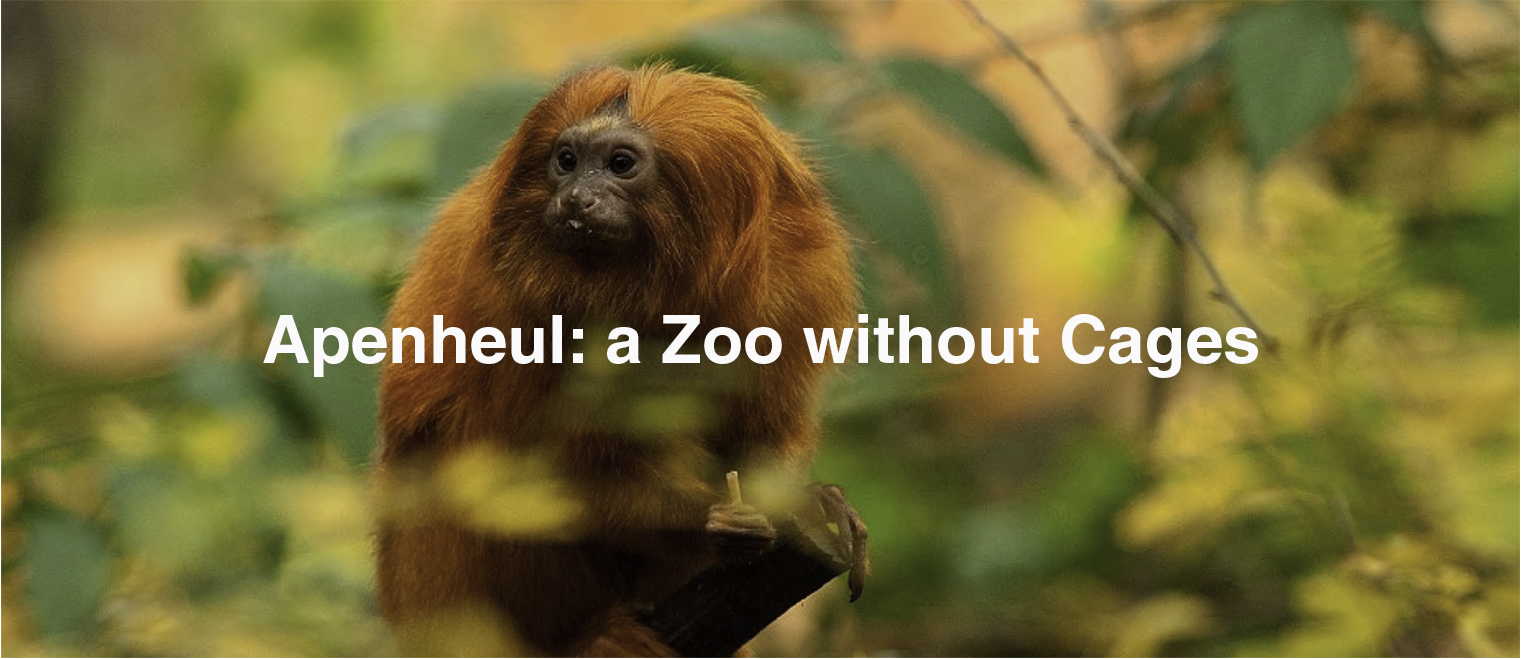
Analyzing Existing Potential
For the masterplan strategy our approach was to reconsider the existing potential of the park as a starting point to re-position its message of natural conservation and biodiversity.
Through a careful analysis of existing landscape, buildings and climate conditions we established several intervention nodes for the short, medium and long term development.
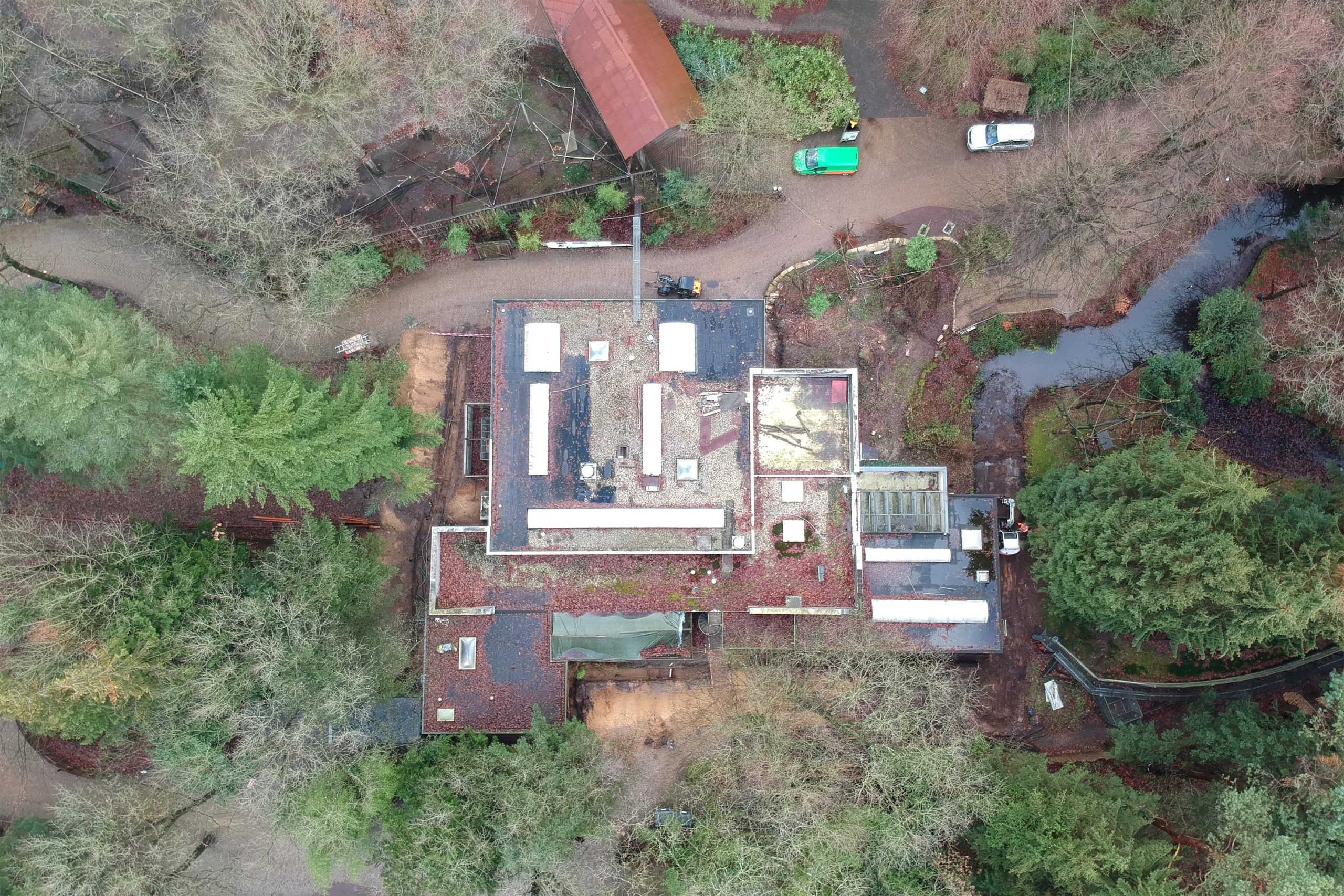
Apenheul First Main Structure (Long Outdated)
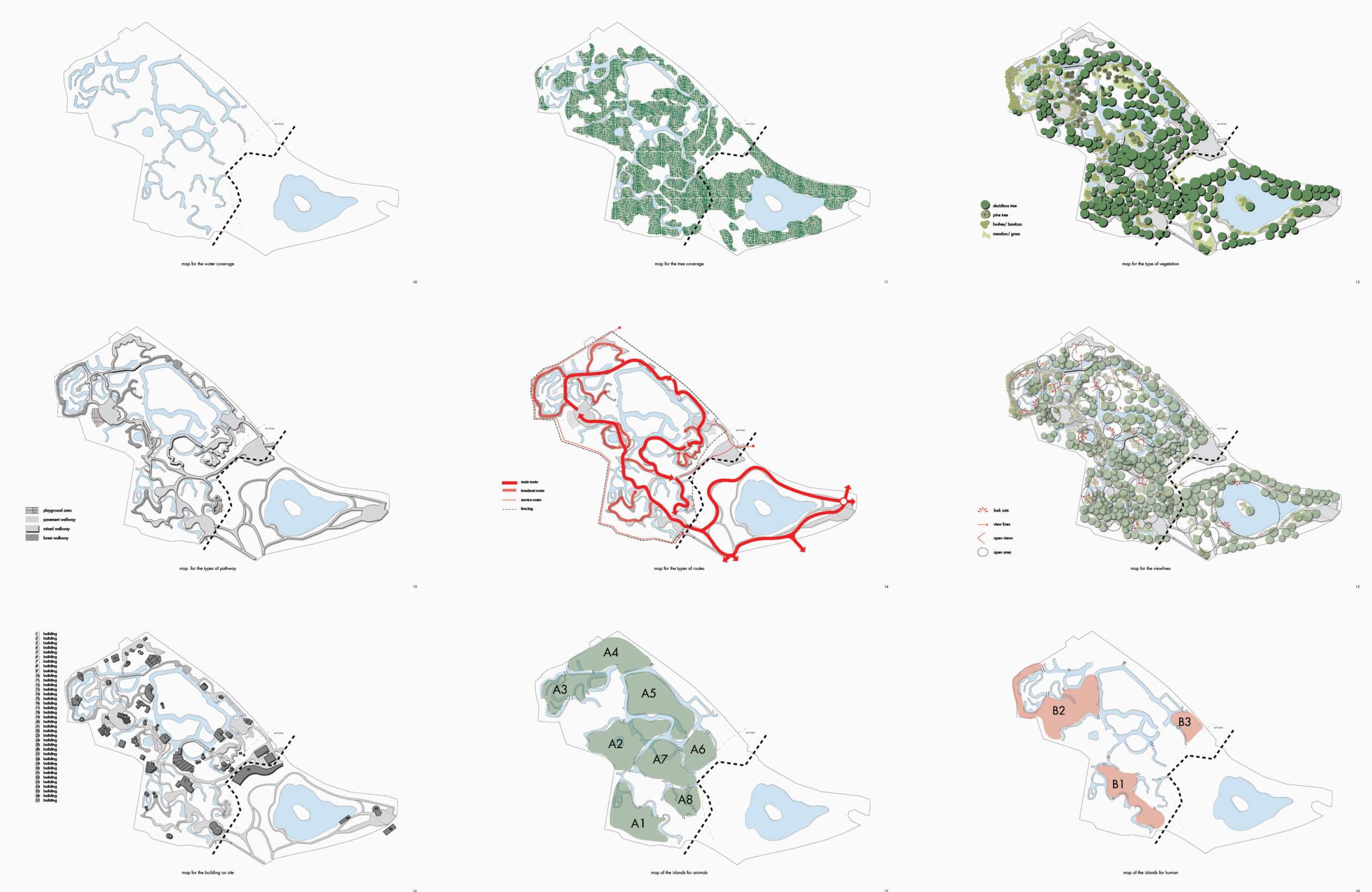
Site Diagrams
Client Collaboration
The analysis and design development process was done in close collaboration with the park’s staff and their inherent knowledge.
As part of our design approach we proposed a series of design workshops with feedback follow-up meetings. These were organized in groups related to the various disciplines in the zoo, such as animal care and biology, education, hospitality and visual identity. We helped to then translate their input in a series of quick design sketches, as input to the design process.
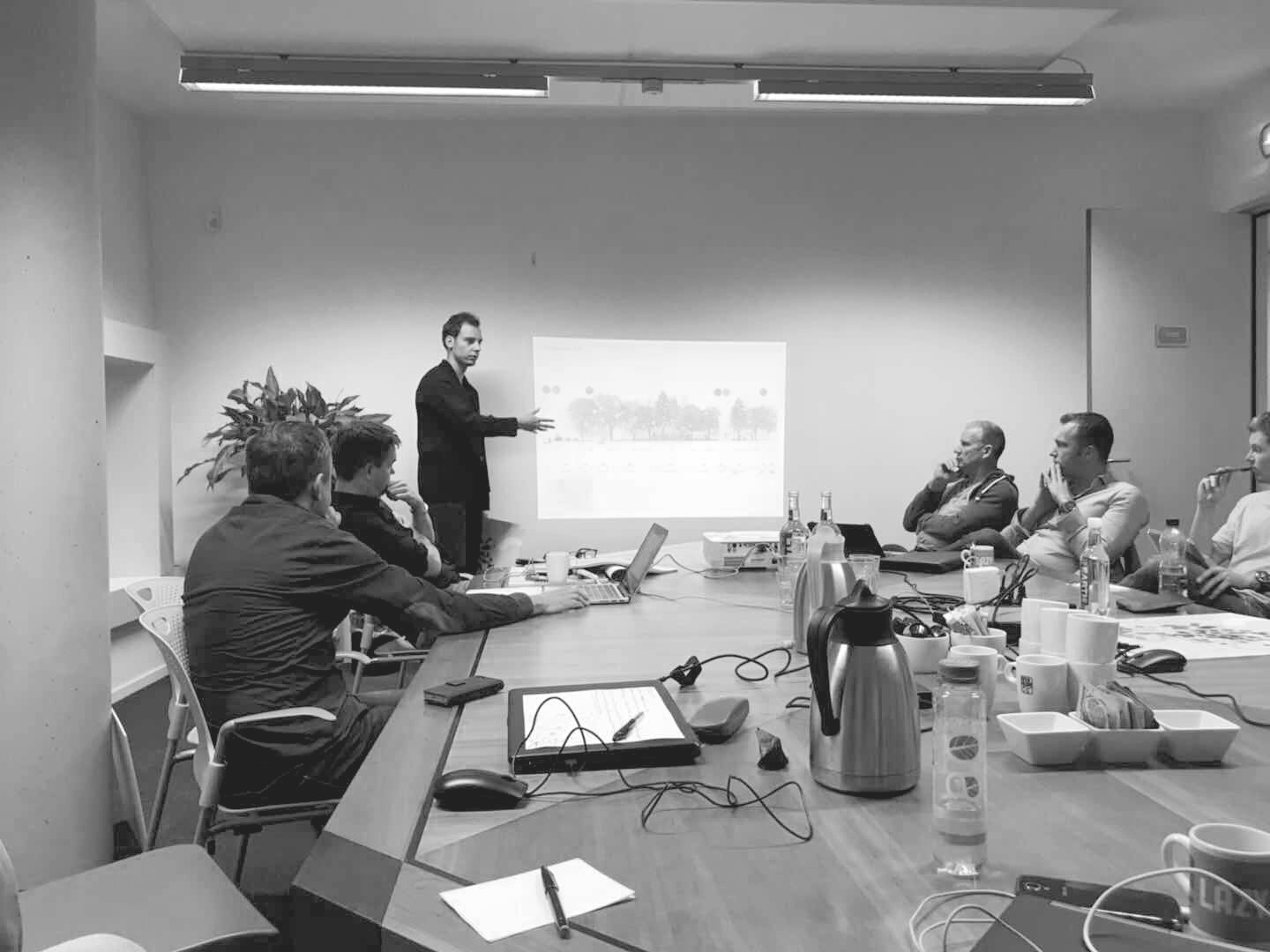
Brainstorm Meeting With Clients
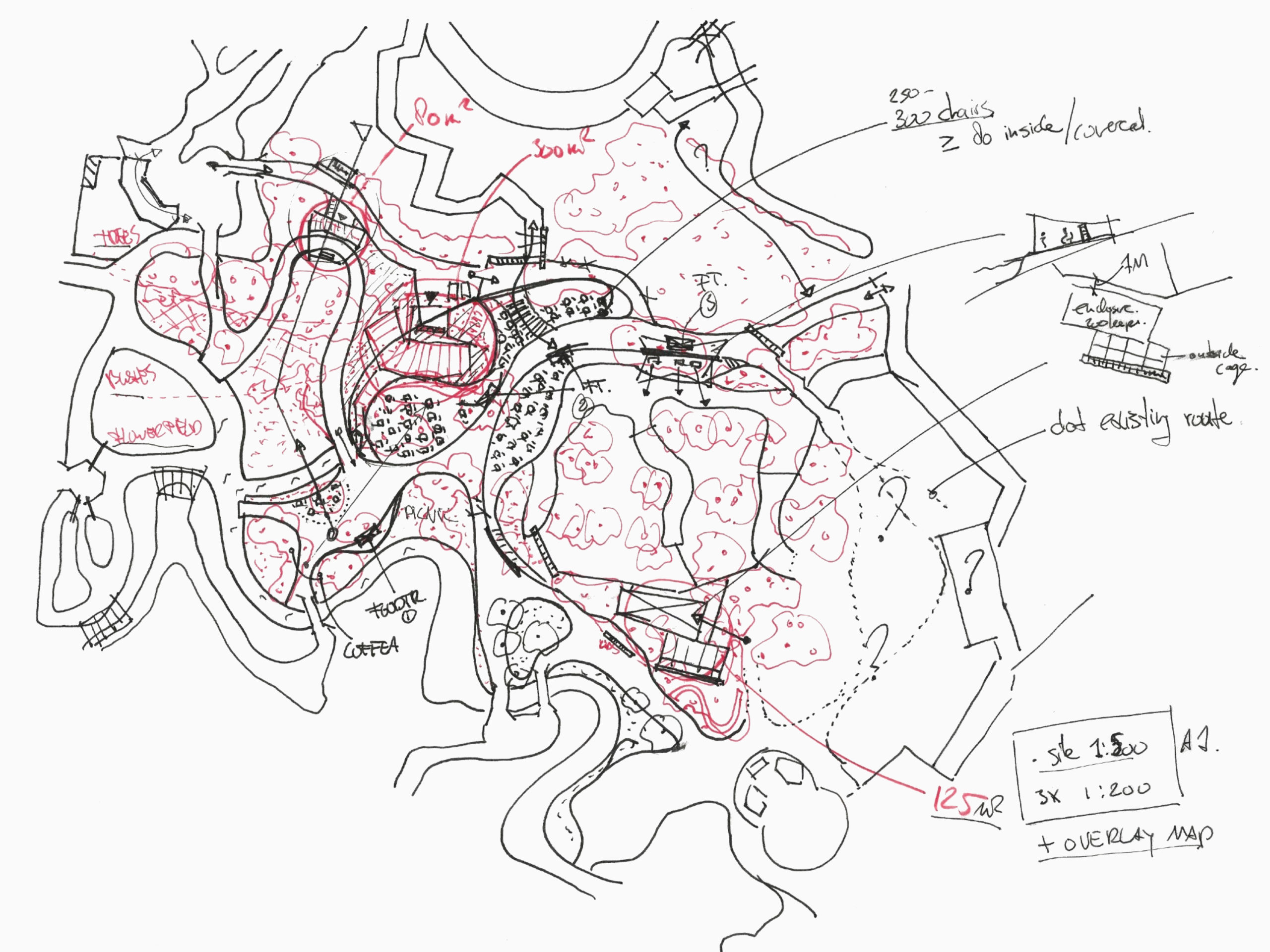
Brainstorm Sketch during Workshop
First Phase: General Masterplan
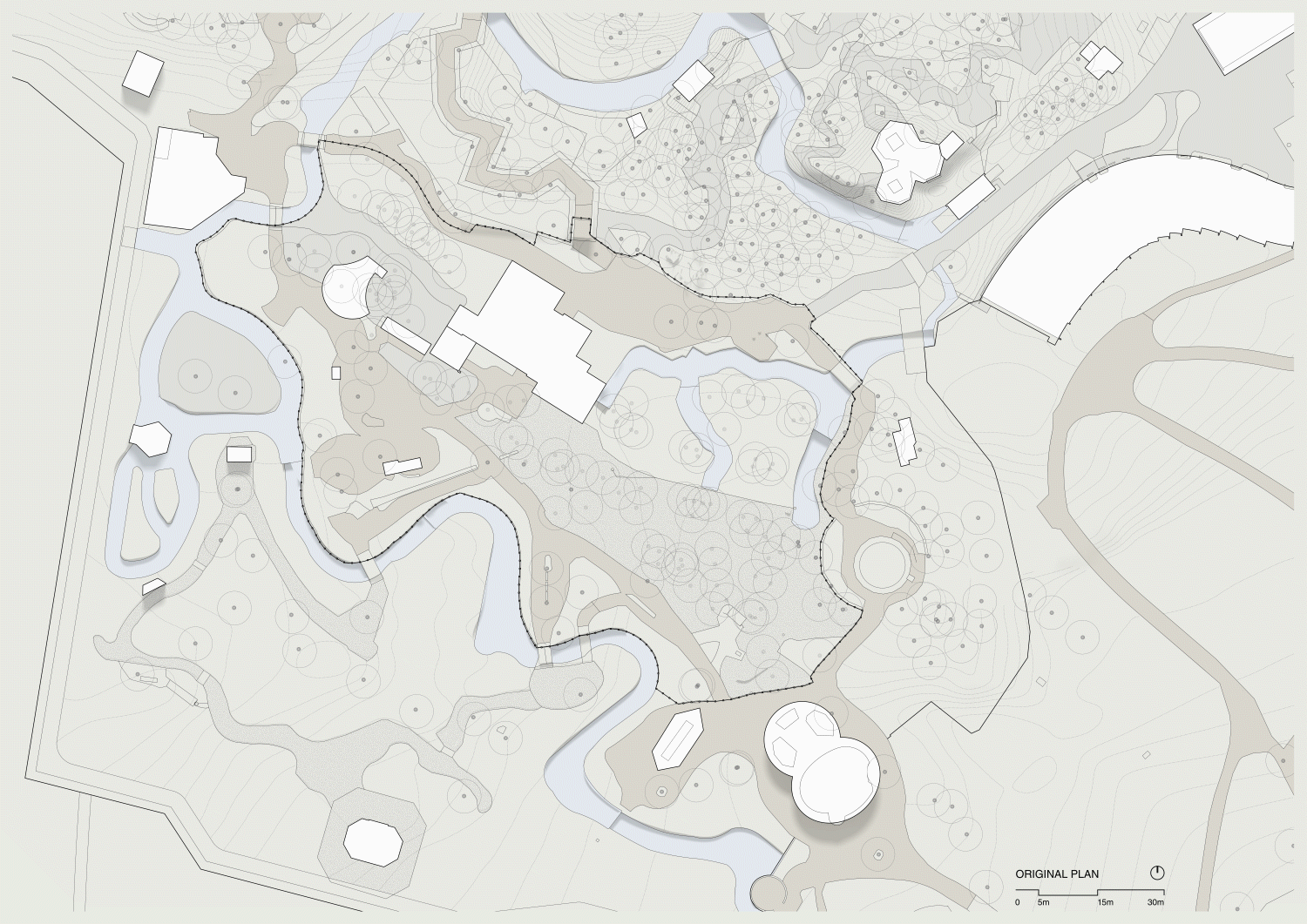
Before and After Plan (Animated GIF)
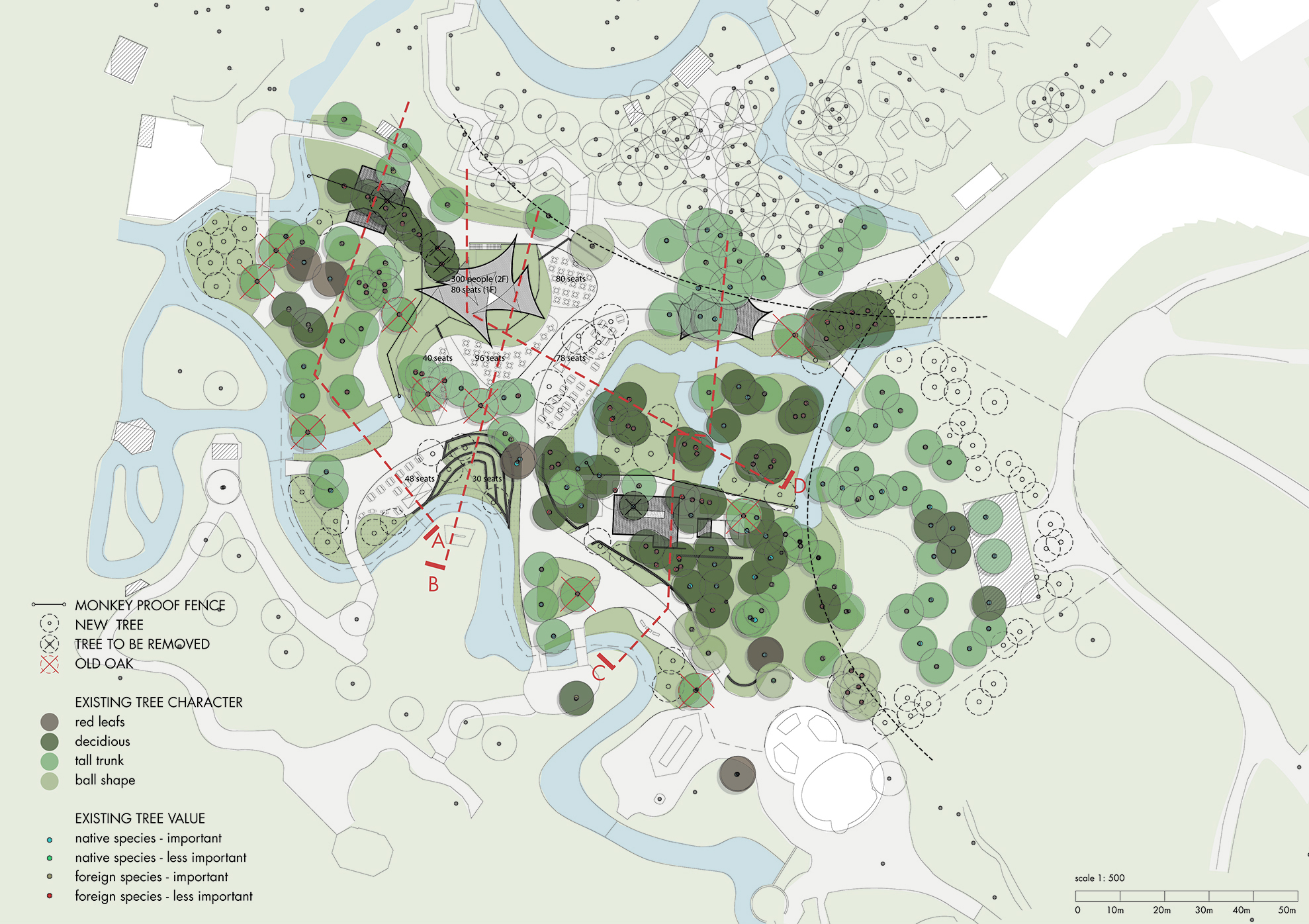
Tree Value Analysis
Landscape
The vision for the park from its founding was clear; a place where both primates and humans can coexist and where people can learn about nature and animals. The unique natural environment becomes the backdrop to all of this, and provides a comfortable environment for the animals.
The design process started from the existing landscape; and evolve these concepts by developing architectural interventions in the park which would blend together with the landscape planning, reinforcing one another.
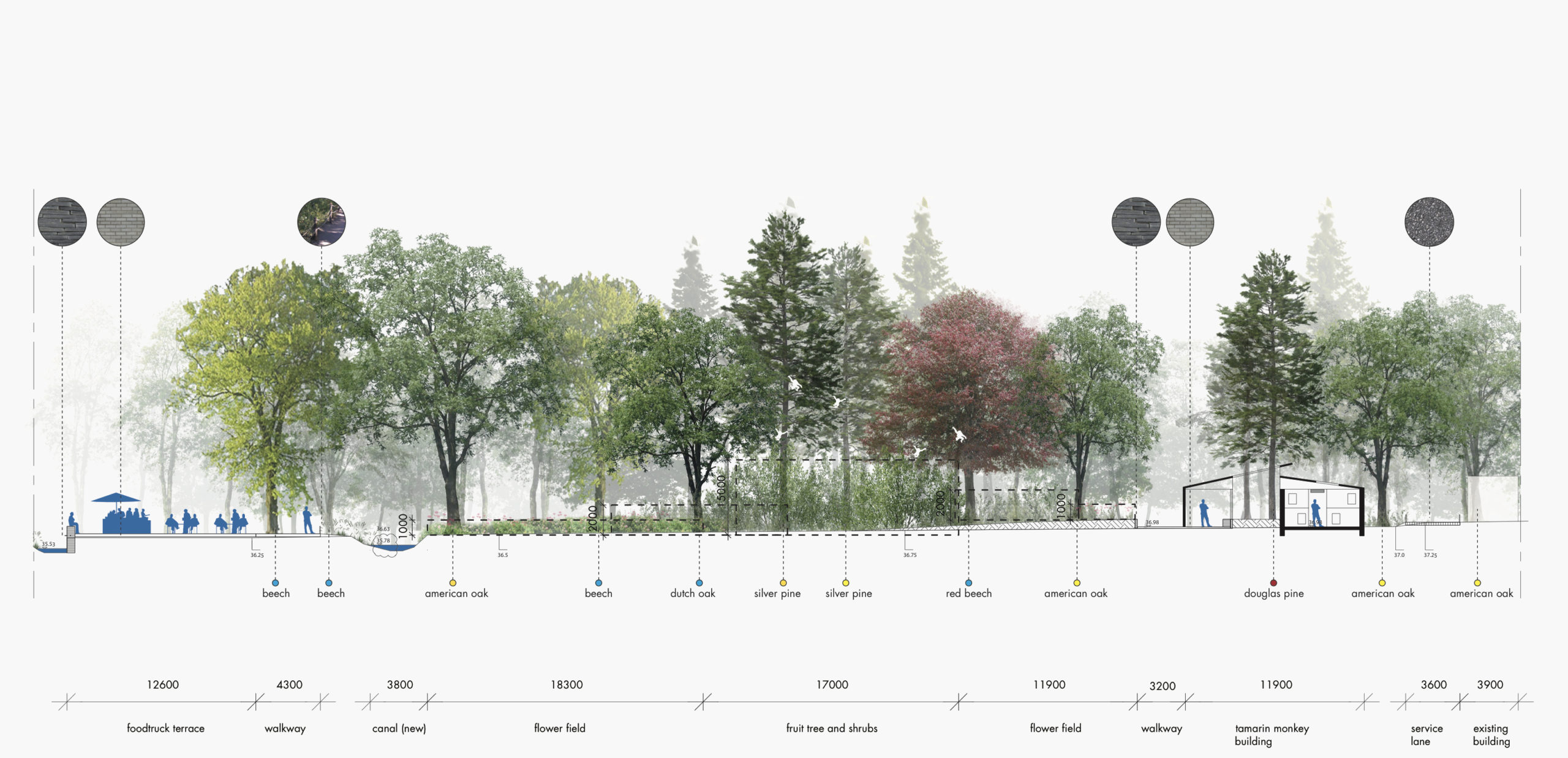
Landscape Section
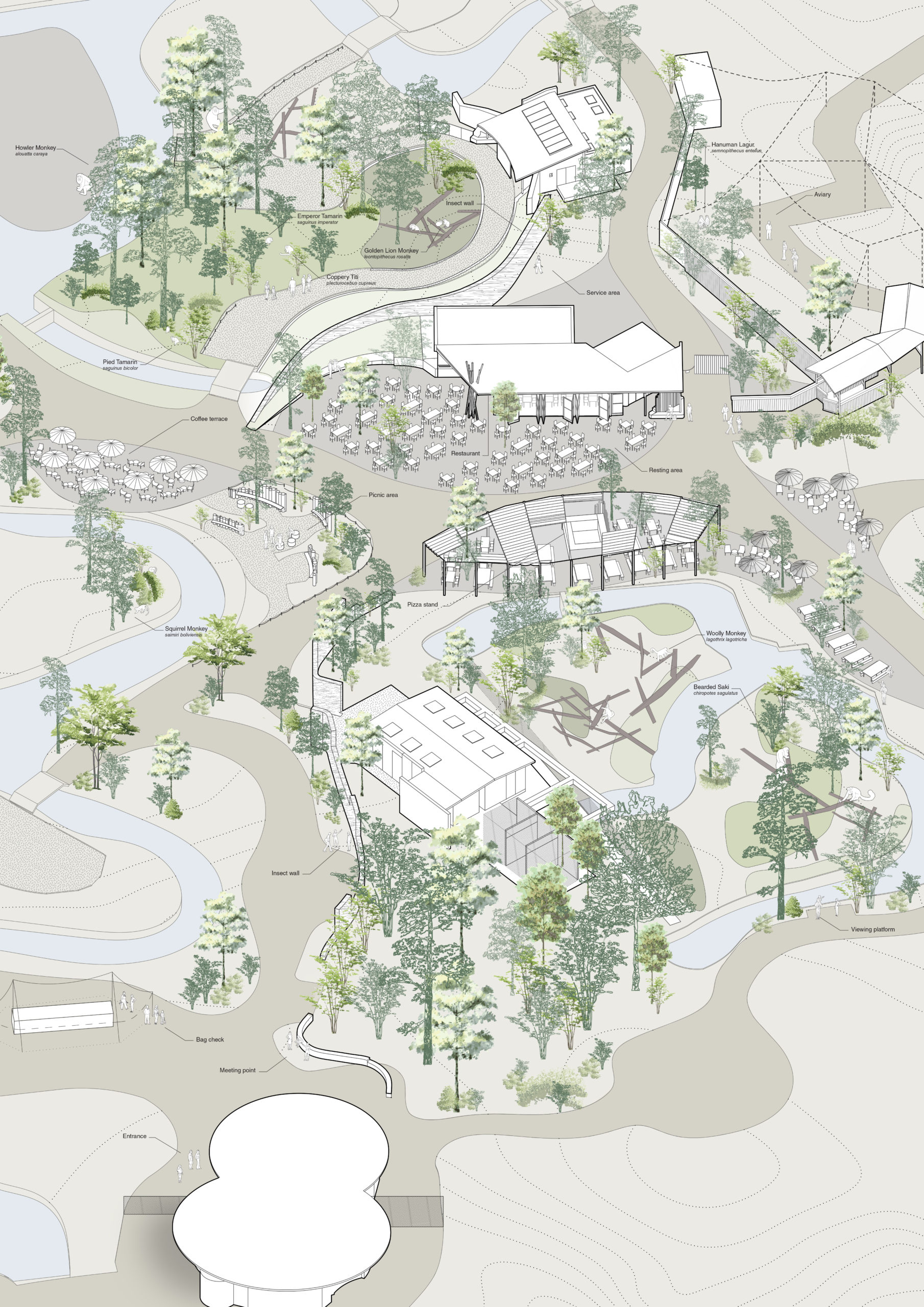
Overall Axonometric View
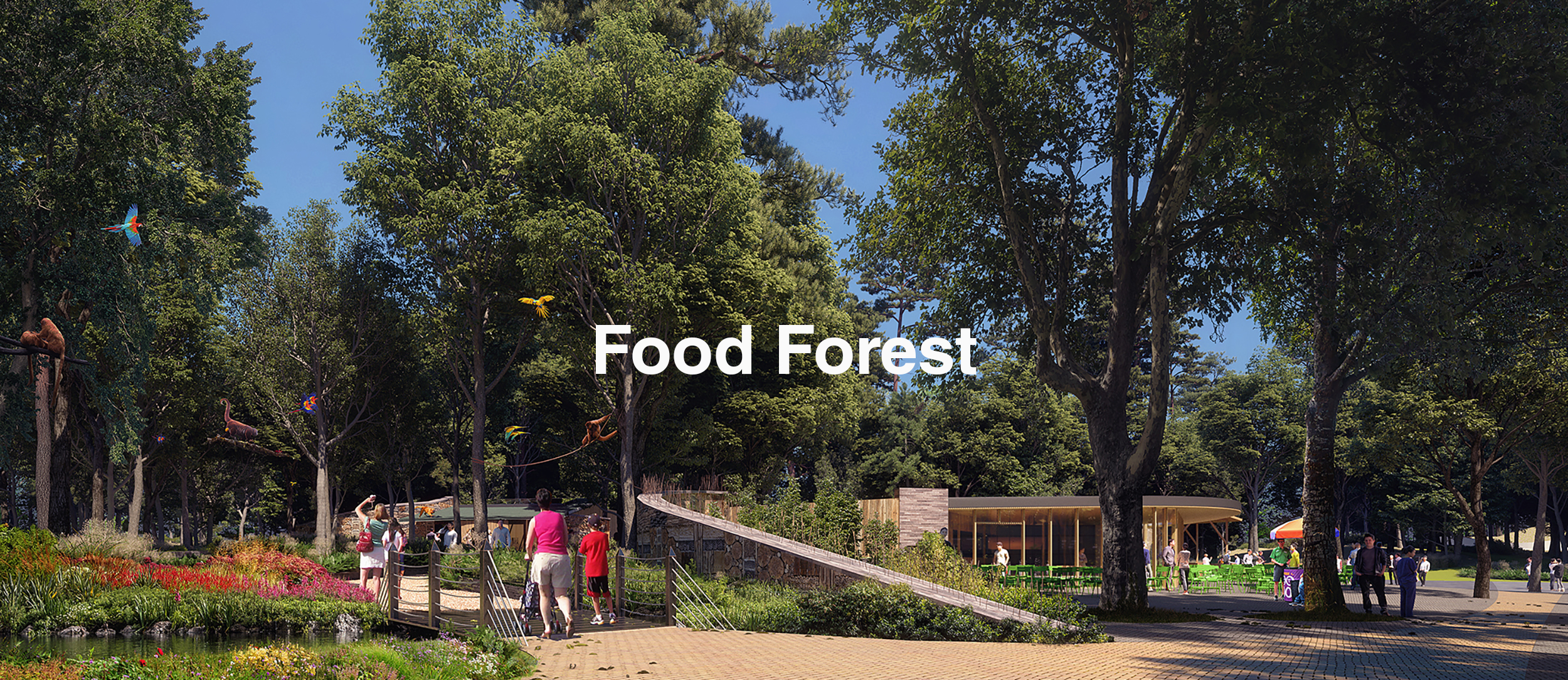
Birds
Attracted by this unique and diverse landscape of Apenheul is a great diversity of wildlife who inhabit the area.
There are roughly 24 different species of birds found in the park, of which at least two are endangered in the Netherlands. All the birds shown below were sighted over the course of one year, according to waarneming.nl
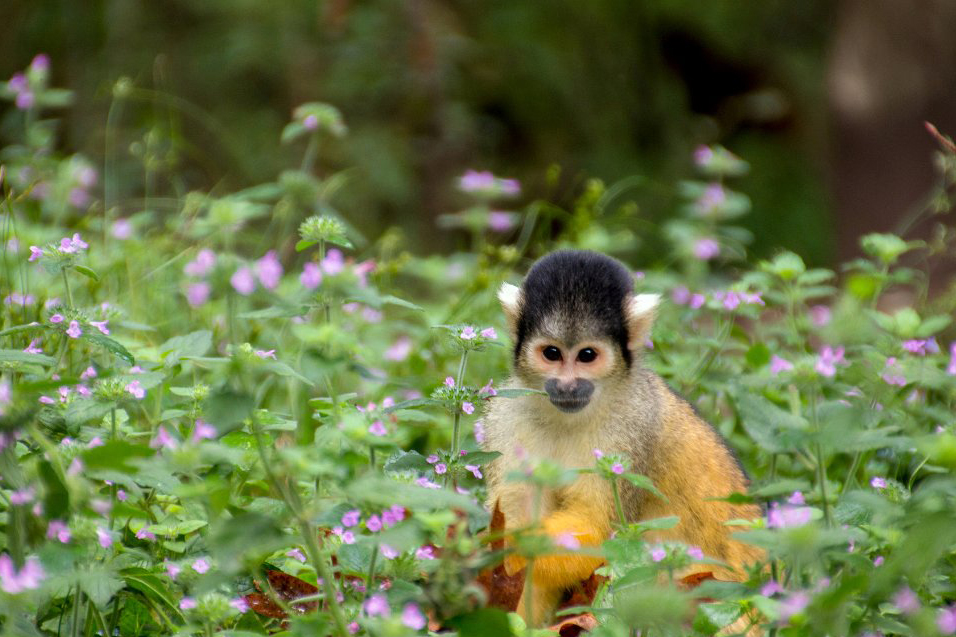
Ecosystem Species
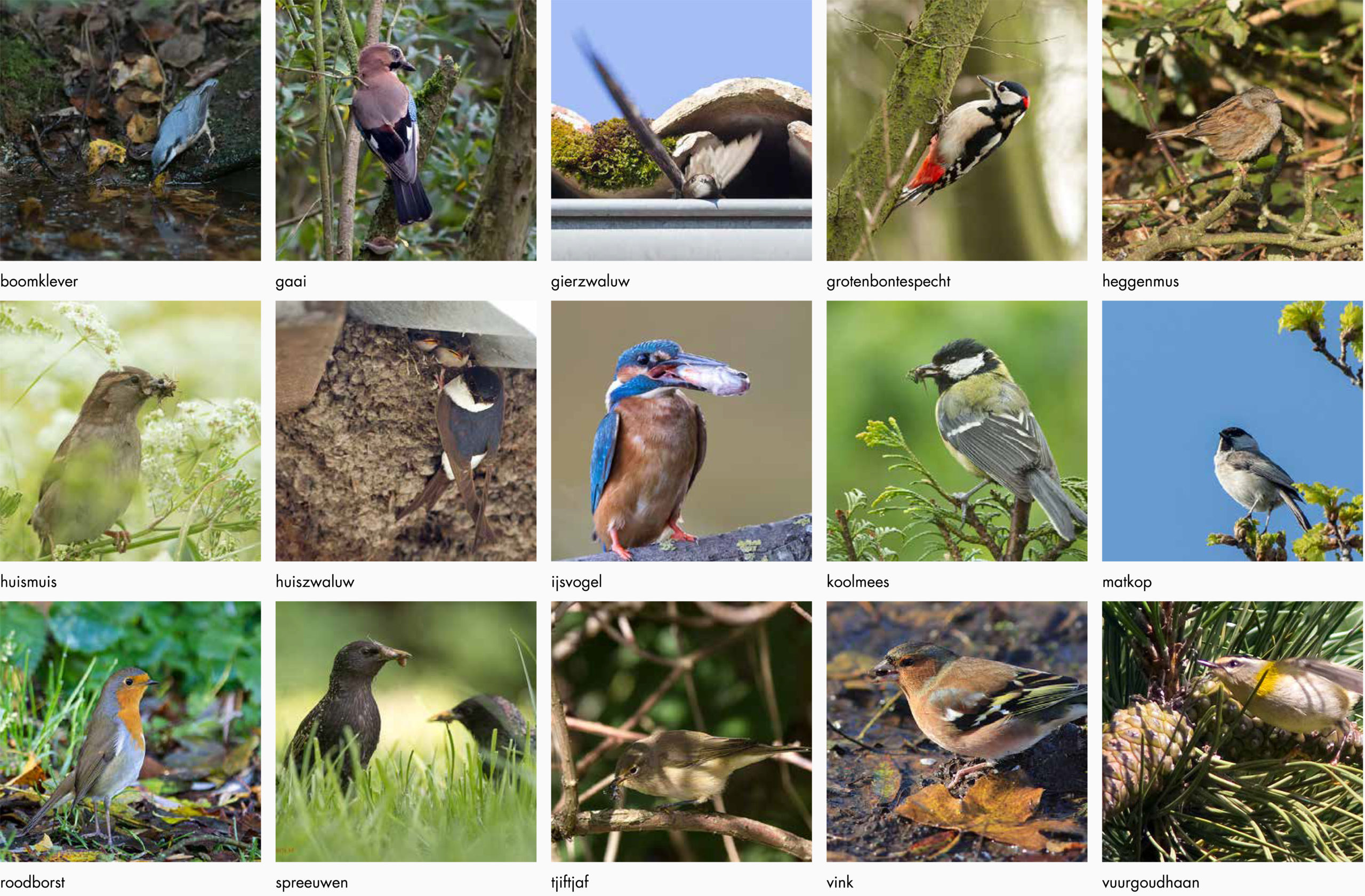
Site Fauna Analysis (Birds Species)
Forest Chain
Both the diverse landscape and the diverse wildlife found in the park contribute to many food chains and natural circular systems in the environment.
Insects and bees are attracted by the plants, which are eaten by the birds, (and some of the monkeys!), the bees pollinate the plants, the squirrels eat the plants and distribute the seed etc.
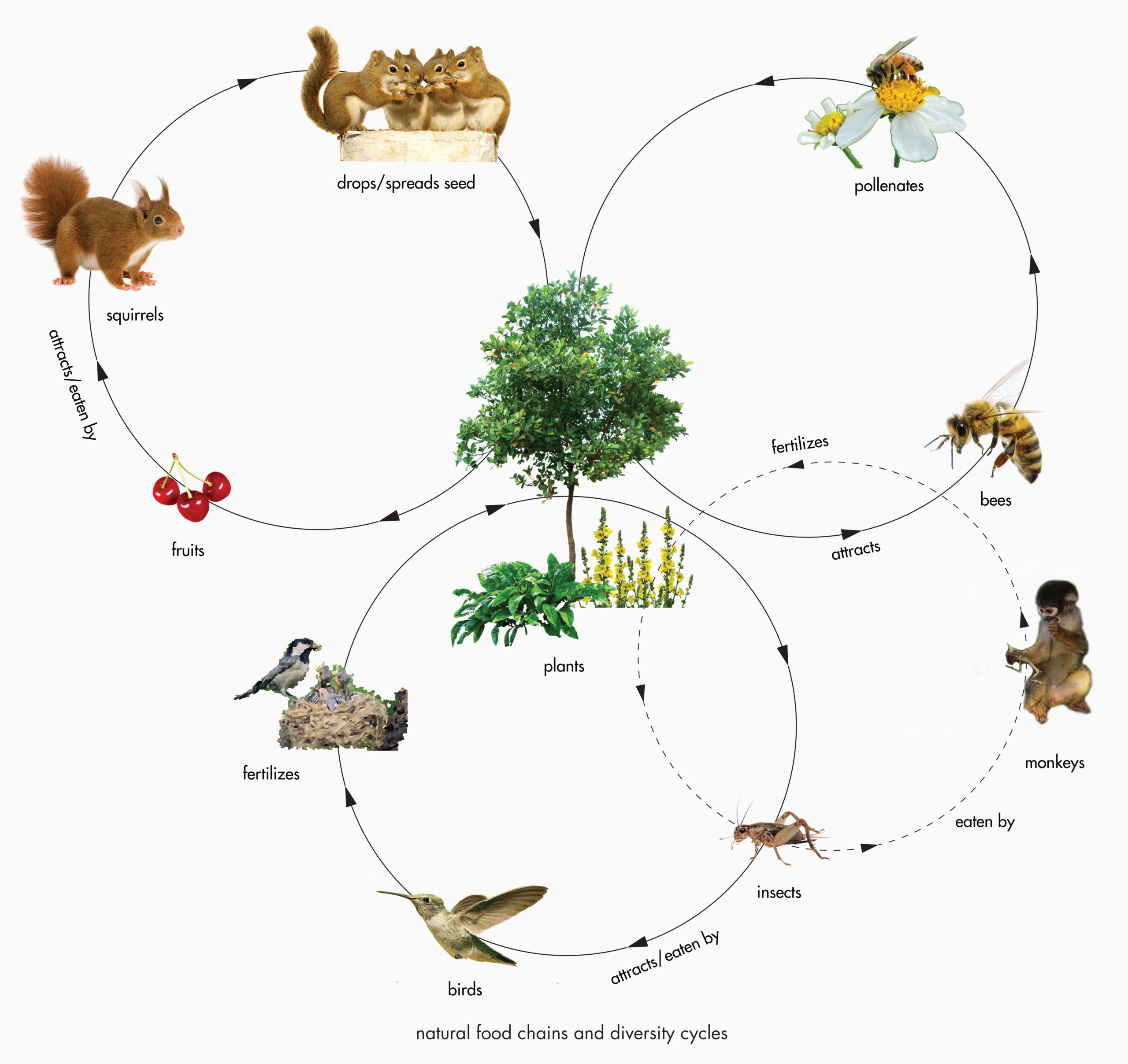
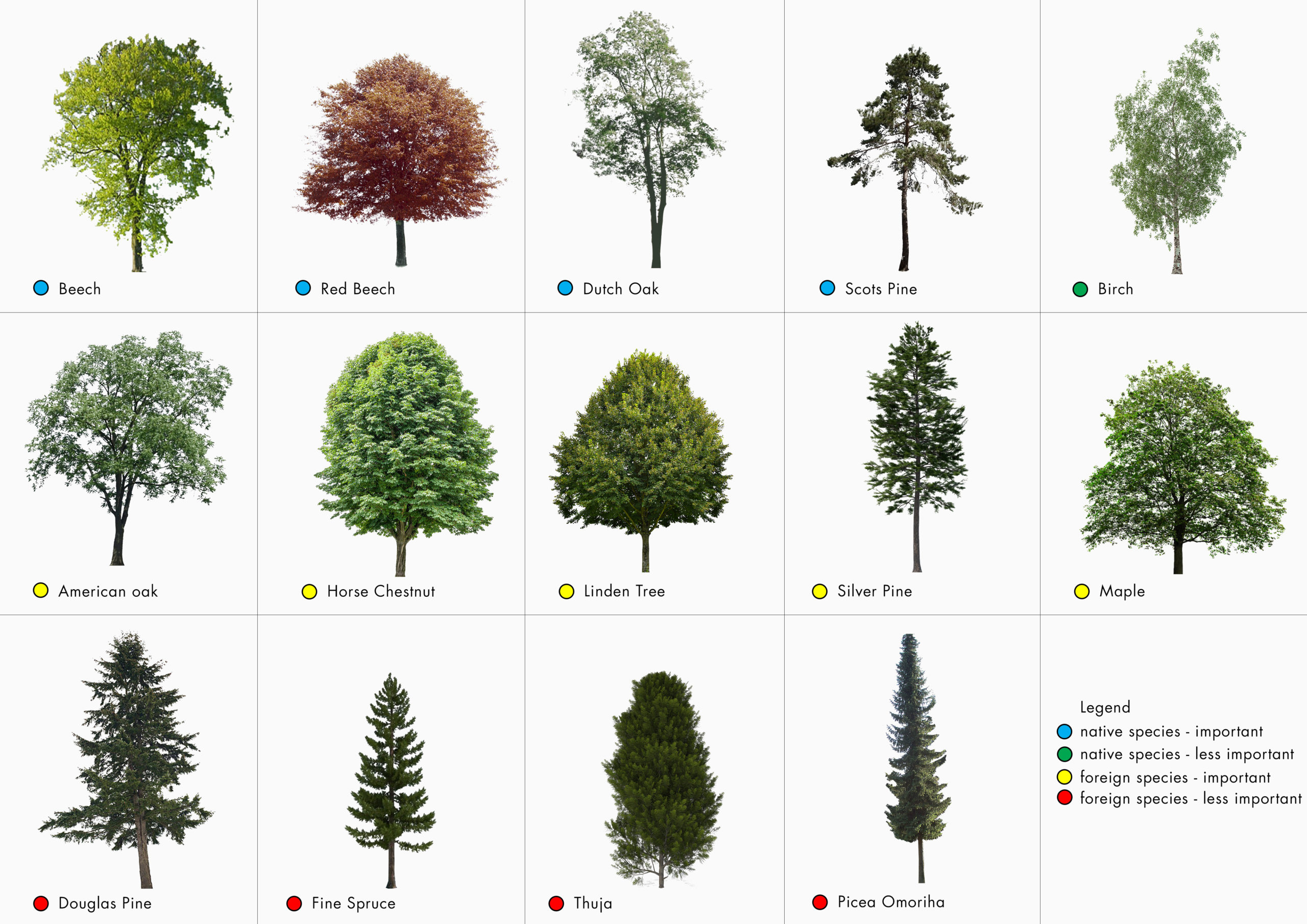
Site Flora Analysis (Trees Species)
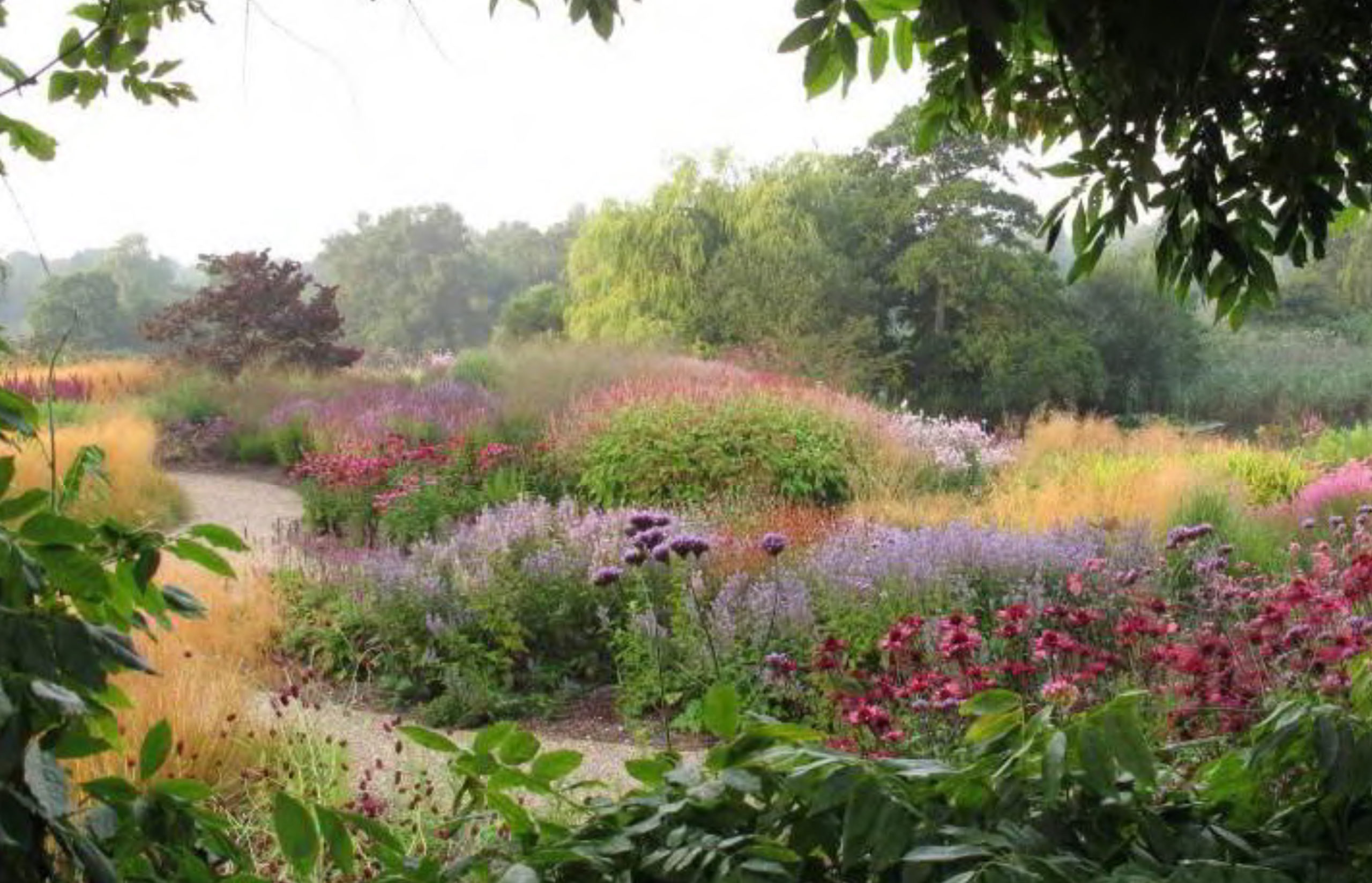
Insect Flower Field Reference
Food Forest
In the firs phase implementation area, the food forest becomes a place in which the local flora and fauna are home to the monkeys with visiting human visitors as their guests. The plants form the food base, but the food forest also includes the largest insect hotel in the world.
An integrated design makes the area the place where biodiversity can be experienced, developed for monkey, man and nature.
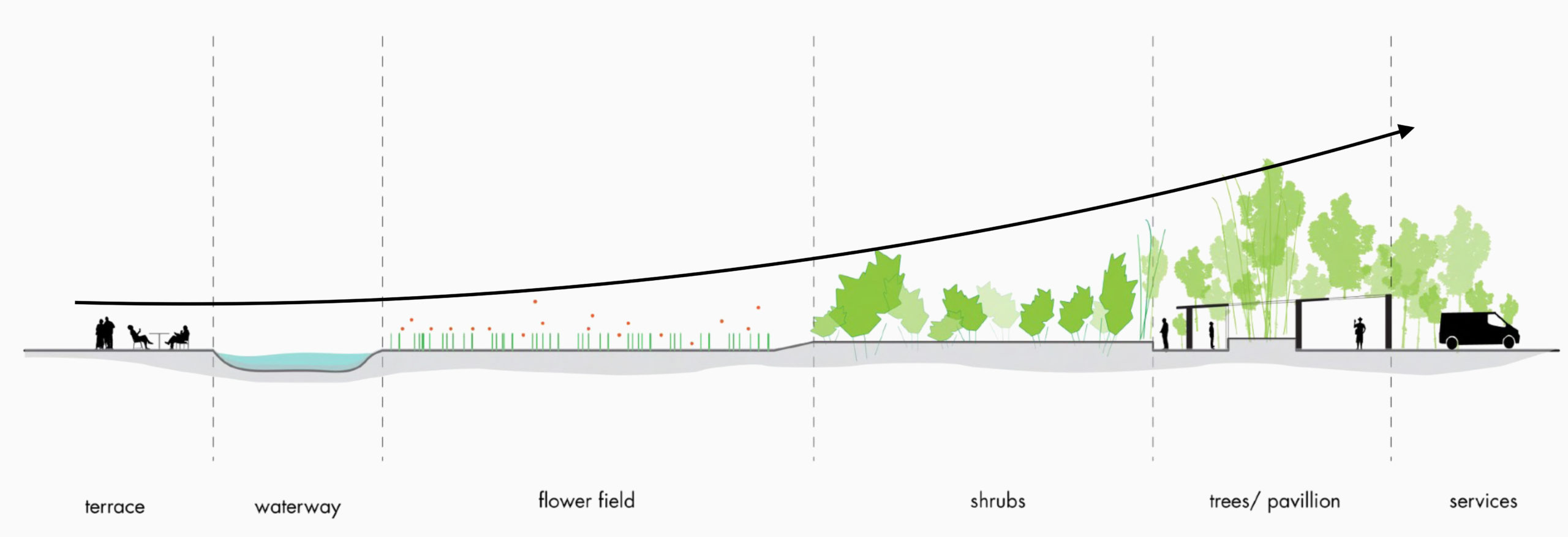
Section with Landscape Progression

Planting Zones

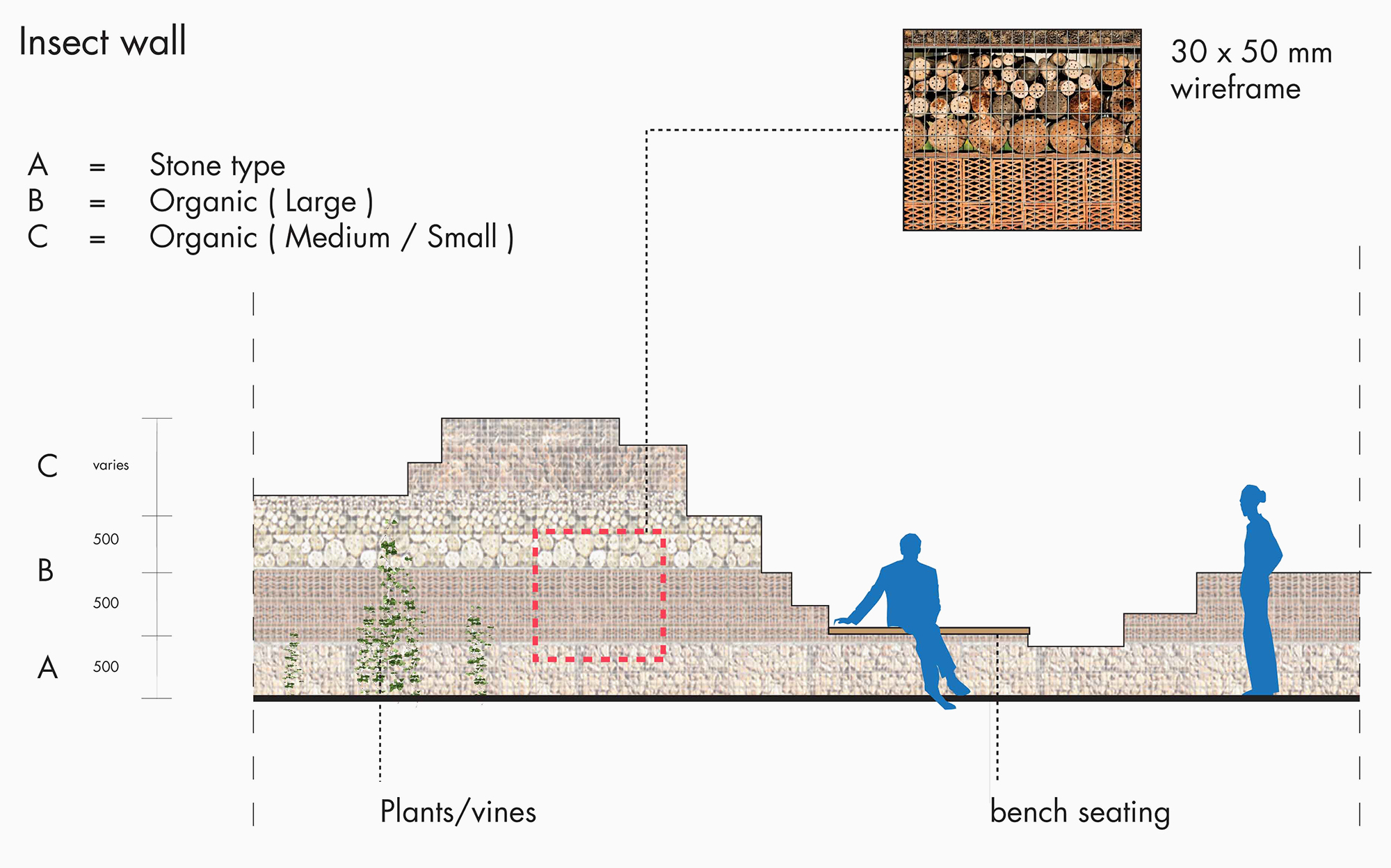
Insect Hotel Build Up
Building with Waste
The insect walls or insect ‘hotels’ are made using upcycled materials in the form of recycles bricks, forest timber, foraged stone, dried grass and dried pine cones, all from the surrounding area. These walls create excellent habitats for insects to call home, and increase the biodiversity of the park.
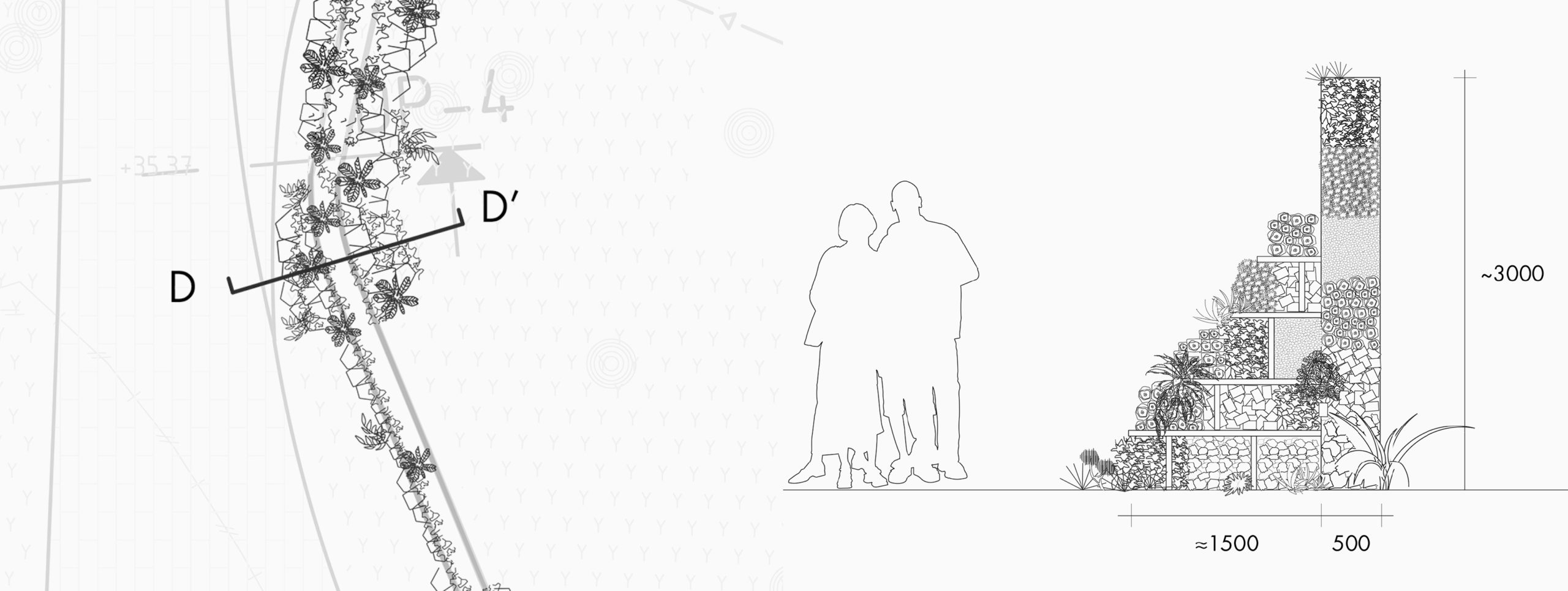
Insect Hotel Details

Insect Hotel Mock-up integrating Building Waste

Realized Insect Wall – Spring 2020
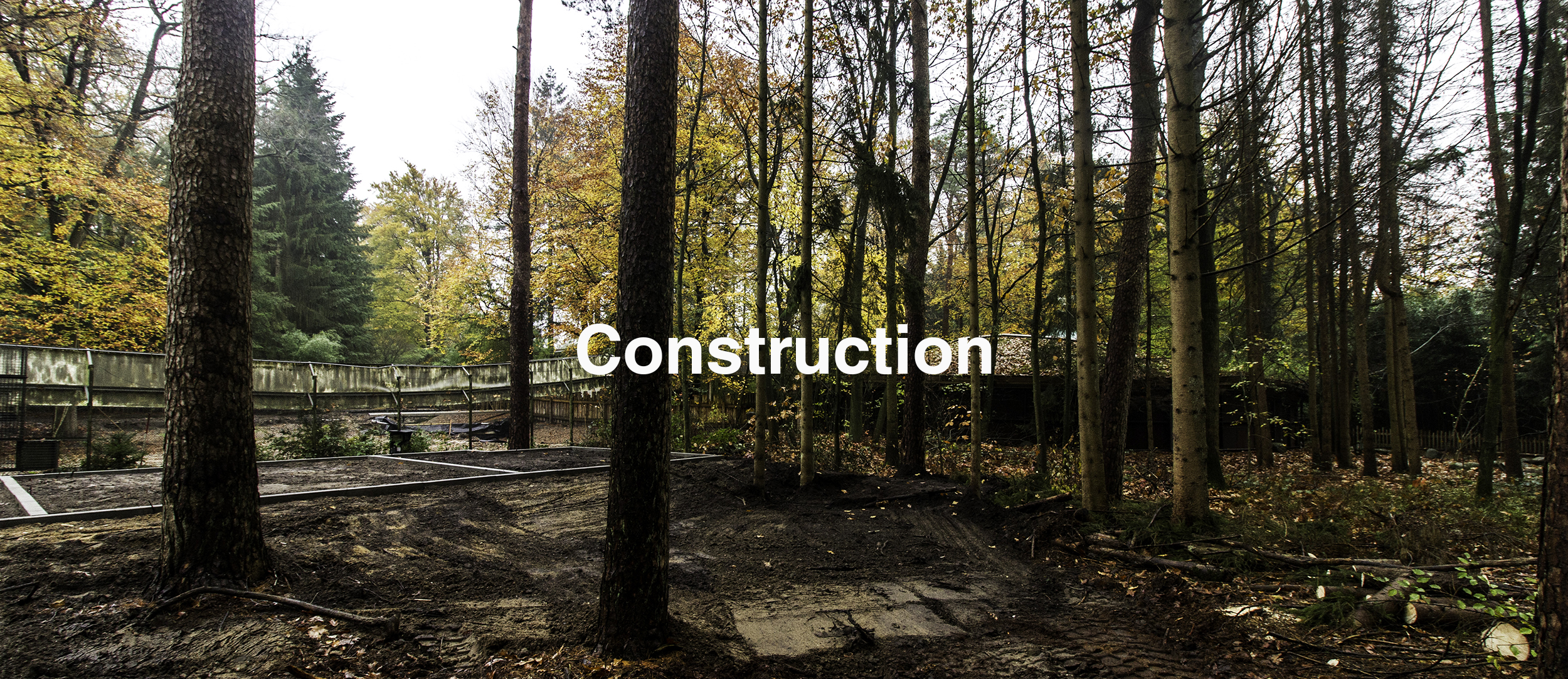
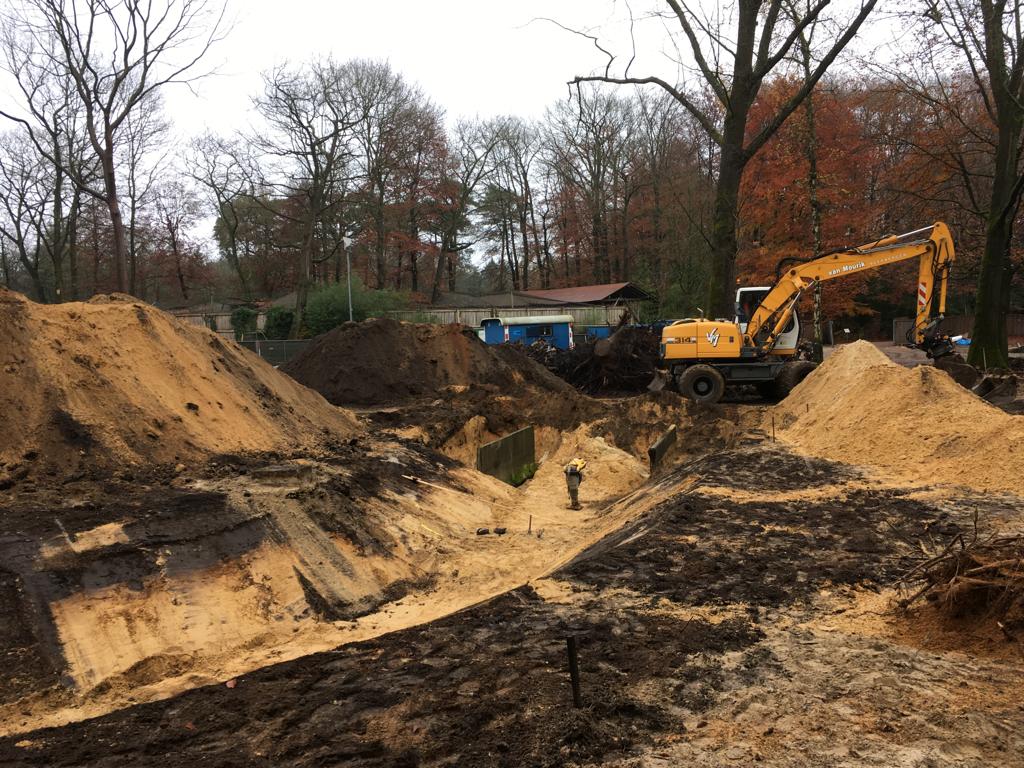
Tamarin Monkey Area Under Construction (Nov. 2019)
Implementation
All the materials generated as a result of the dismantling of old structures in the park should be reused and upcycled. From bricks, to windows, to doors, to timber, everything finds a use, and if something else is needed, there is a vast network of surplus materials around the Netherlands ready to be upcycled.
In addition, a circular building concept is applied, which represents a goal of 0% waste and no further depletion of resources. Everything which goes into the building should be able to be dismantled and reused in the next lifecycle of a building.
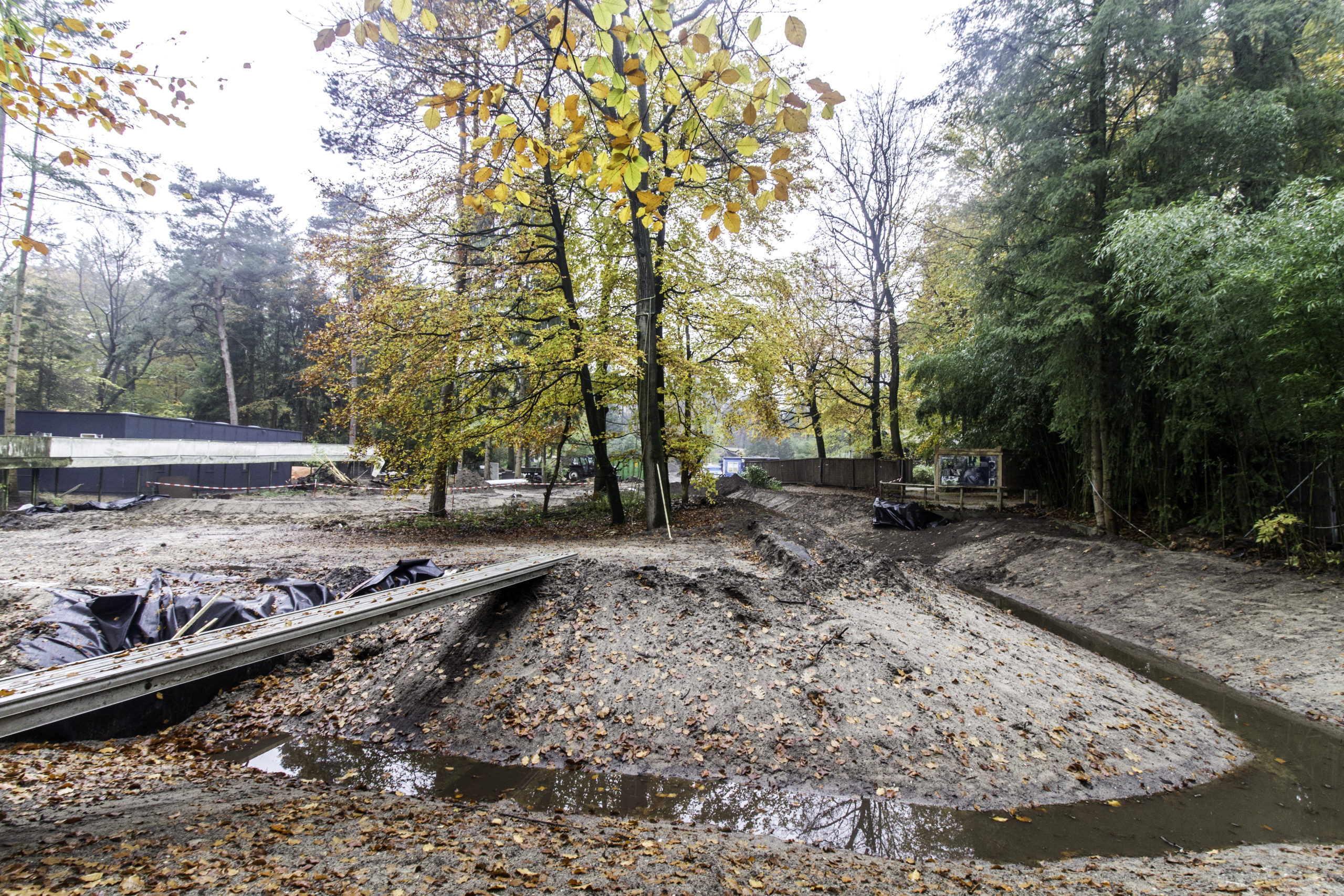
New Monkey Island and Canal Construction (Nov. 2019)
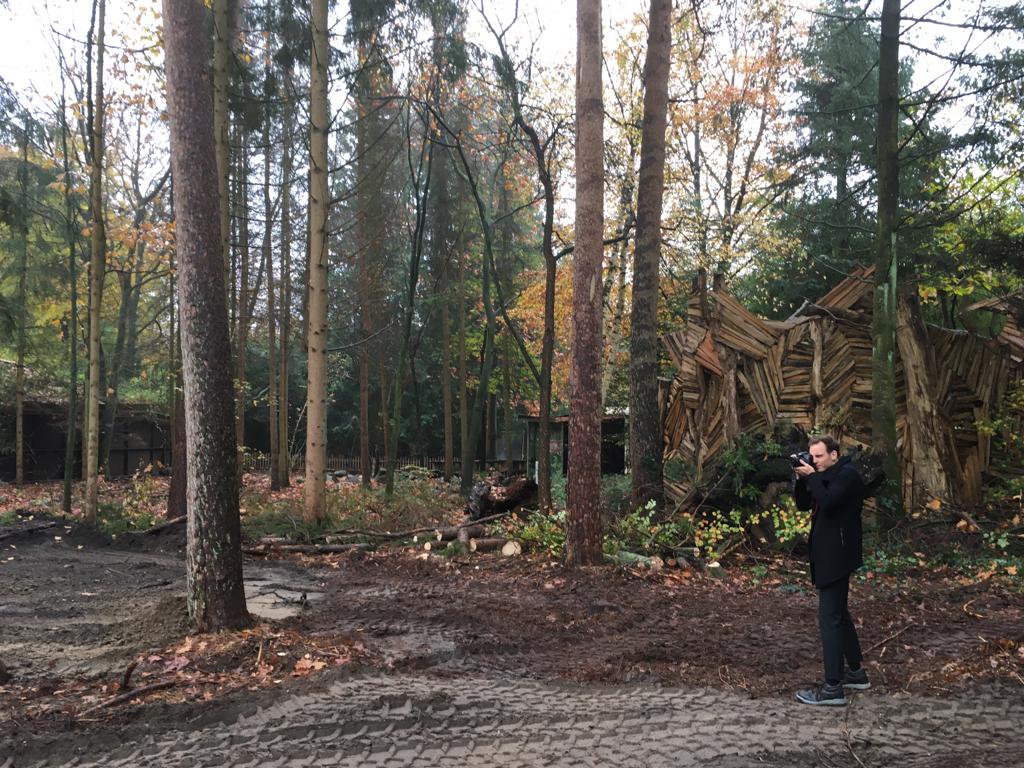
On site Inspection (Nov. 2019)
Construction Coordination
For the implementation of the project we worked together with several local partners. The construction drawings and technical design documentation was completed with the help of Tebodin for the buildings, and Viforis for the landscape, followed by a series of on site mock ups.
For the landscape design we also worked closely together with Apenheul’s own flora and fauna experts. Throughout the construction process we also arranged frequent site visits to monitor quality control and assurance.

Insect Hotel Full-scale Mock up (Oct. 2019)

Construction Progress (Nov. 2019)

Drone photo of landscape construction – Nov 6th 2019
Team: Martijn de Geus and Han Zhang with Hans Smolenaers, Victor Tee, Simon Henstra, Tan Soon Chern, Kenji Heda, Elena Gamez, Oxana Sosnitskaya, Alexandra Platovska, Lulu Li
Project Year: 2018-2020
Technical Design Landscape: ViForis BV
Technical Design Architecture: Bilfinger Tebodin Netherlands BV
Contractor Landscape: Van Mourik Grondverzet BV
Contractor Architecture: Draisma BV
Location: Apeldoorn, The Netherlands
